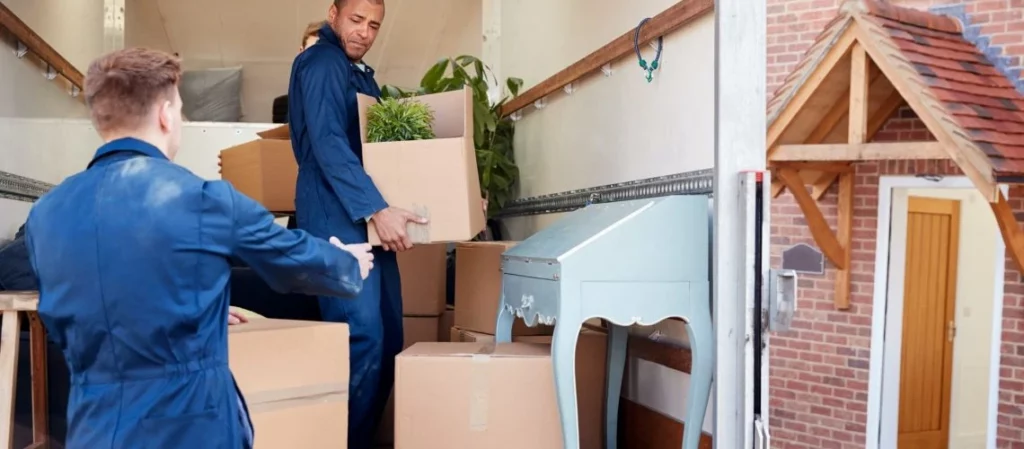We use ‘in’ for spaces …
We use ‘on’ for a surface …
We use ‘at’ for a place or location …
Moving day

John is telling the workers where to put everything in his new house.
“Those boxes go in the kitchen. You can put them on the counter. I want the armchairs in front of the window in this room. The sofa can go between the armchairs. The desk and chair go in the study. Put the lamp next to the desk. Those pictures go on the wall over there. Put the smaller one above the bigger one – no, put the smaller one below! That’s good. Just a moment, there’s someone at the door. OK, that box goes in the bedroom next to the wardrobe. The wooden boxes can all go outside, behind the house. And that’s everything. Great job guys!”
in, at, on
In this unit, in, on, at are prepositions of location. (They can also be prepositions of time.)
in
We use ‘in’ for an area, for open and enclosed spaces.
They live in the city.
Her house is in the country.
Your keys are in your bag.
He is sitting in the garden.
at
We use ‘at’ for a point, for a place or location.
The shop is at the corner of the street.
There is someone at the door.
Park the car at the entrance.
She works at the hotel’s front desk.
on
We use ‘on’ for a surface.
Write your name on that page.
Put the boxes on the floor.
Hang the photo on the wall.
Put the sticker on the book’s cover.
between, behind, in front of, next to, above, below
These prepositions are more precise. We use them to say exactly where somebody or something is.
between
We use ‘between’ to say one noun is in the space that separates two other nouns.
We live halfway between Patong and Phuket Town.
My car is parked between the red Ford and the wall.
behind
We use ‘behind’ to say one noun is at the back of another noun. It is the opposite of ‘in front of’.
Peter is standing behind the door.
The warehouse is behind the supermarket.
in front of
We use ‘in front of’ to say one noun is at the front of another noun. It is the opposite of ‘behind’.
He sat in front of me on the train.
The supermarket is in front of the warehouse.
next to
We use ‘next to’ to say one noun is beside another noun.
She sat next to me me on the bus.
The hospital is next to the police station.
above
We use ‘above’ to say one noun is higher than another noun. It is the opposite of ‘below’.
(Note: ‘over’ is similar to ‘above’, but means one thing is directly over another. ‘above’ can be adjacent, as in the second example.)
The birds fly above the houses. (The birds fly over the houses.)
We had a picnic on the hill above the river.
below
We use ‘below’ to say one noun is lower than another noun. It is the opposite of ‘above’.
(Note: ‘under’ is similar to ‘below’, but means one thing is directly under another. ‘below’ can be adjacent, as in the second example.)
We sat below a tree for our lunch. (We sat under a tree for our lunch.)
The sun went below the horizon.
Complete the sentences
- The pictures are on the wall.
- The bed is below the pictures.
- The bed is in the bedroom.
- The cushions are on the bed.
- The bed is between the bedside tables.
- The switch is below the window.
- The curtains are behind the chair.
Complete the sentences
- Peter is waiting for me at the shop.
- The books are on the bed.
- The pen is on the table.
- I’m on holiday in Brazil.
- You are standing on my foot.
- The tea and coffee are in the kitchen.
- Do you live in Bangkok?
- ‘Where is Mary?’ ‘She is at the station.’
- I’m on a bus in Phuket.
- The prices are on the menu.
- My money is in my wallet.
- I put milk in my coffee.
